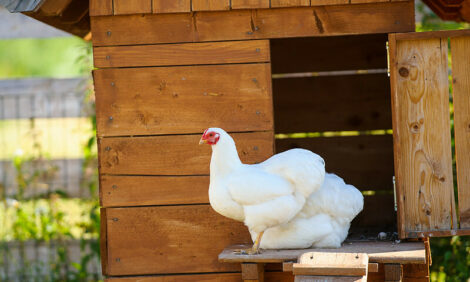



Global Protein Market in State of Structural Change
FRANCE - The world is no longer one of structural surpluses, it is a world of structural scarcity David Nelson, a global strategist with Rabobank's Food and Agribusiness Research and Advisory Group told the World Meat Congress in Paris last week, writes Chris Harris.He said the basics of the world agricultural market have remained the same with populations rising and land use falling.
However, crop prices are also rising and the high grain prices are being driven by higher gross domestic product growth, largely in developing countries.
This growth in GDP is driving the demand for meat and hence the demand for grain, Mr Nelson told the congress.
He said that in the developed world meat consumption in going down, but the demand growth is coming from the developing markets while the developed markets are flat.
This is the scenario that he said analysts forecast will continue for the next 10 years.
He said that while world GDP growth was on an upward swing two years ago, this growth is now on the decline.
In 2010 world GDP growth was 4.05 per cent. Last year it was 2.87 per cent and this year it is expected to fall to 2.26 per cent although, rise again in 2013 to 2.89 per cent.
By contrast, China that has seen the most dramatic growth in its GDP over recent years is also facing a slowdown. In 2010, China's GDP growth was 10.4 per cent, but it fell to 9.2 per cent last year and is forecast to go down to 8.3 per cent this year with a slight rise in 2013 to 8.5 per cent.
While the global GDP grew, Mr Nelson said, it outpaced the growth in protein prices although they have now stayed quite high.
The growth in agricultural industrialisation in China has been the main reason for the growth in protein consumption and also prices. The country has changed from back yard production of livestock feeding scraps to a more industrialised production with larger herds and flocks that call for more grain to be used as feed.
However, there have also been other demands placed on the demand for this grain, including the demand from ethanol and biodiesel production.
"£The demand growth for protein is rising, but the growth of crop production is declining," said Mr Nelson.
"There are structural shortfalls in corn production."
Mr Nelson added that he believed the USDA is also overestimating the potential yields for corn which they have set at 166 bushels per acre whereas, he said, in reality they could be nearer to 155 bushels.
He also told the congress that the global problems with meeting demand for grain were because of infrastructure problems in Russia and Brazil and the fact that Russia and Ukraine produce about 25 per cent of the world's grain meant that relying on these countries' production put the world in a precarious position.
China is also structurally incapable of producing its own crops, but the country will keep driving the market for pork, corn and soy.
He said that even assuming that there will be a rebound in the US production of corn this year and that Brazil will be producing more soy, this will only be a small rise in production and the effect on world supplies and the ability to meet demand will be slight.
"There is not a comfortable level of stocks," Mr Nelson said.
Mr Nelson warned that the grain markets are also in the hands of speculators. In recent times fund managers have moved out of the markets but they have the ability to change things around quickly just by moving back in again.
Mr Nelson said that production of protein is also changing with a move to more dairy production in northern Europe. This rise in dairy production has seen a drop in beef production in Europe as more pasture is turned over to dairy. Beef production in Europe is starting to move to the southern countries.
European beef production will also be affected by the imminent changes to the Common Agricultural Policy.
In the pig meat sector, Mr Nelson said that he US has costs that are a third less than those in Europe, but an exchange rate change and a reduction in the value of the Euro has made the EU more competitive in recent times.
Similarly, a devaluation of the Brazilian real has made Brazil more competitive.
However, he warned that with continuing rising costs, Europe might not be a net pork exporter in four or five years' time.
"Europe has been doing a bit better recently with exports of beef and pork up, but feed prices and new regulations will make Europe a challenge," Mr Nelson said.
He warned that the global animal protein industry is becoming globalised as labour rates in China rise along with those in Brazil as their economies grow. However, in developed countries, such as the US, labour rates are predominantly flat - another factor impinging on the global cost of protein.
Livestock costs are also becoming comparatively high in some developing countries, which will have another levelling effect on global prices, while currency swings will affect both production and competitiveness.
Mr Nelson concluded that the major issue affecting world protein markets is the price of pork in China and that although protein production in China is high, producers have been losing money. However, there will still be continuing growth in developing markets that will have a dominant effect on world protein production.









